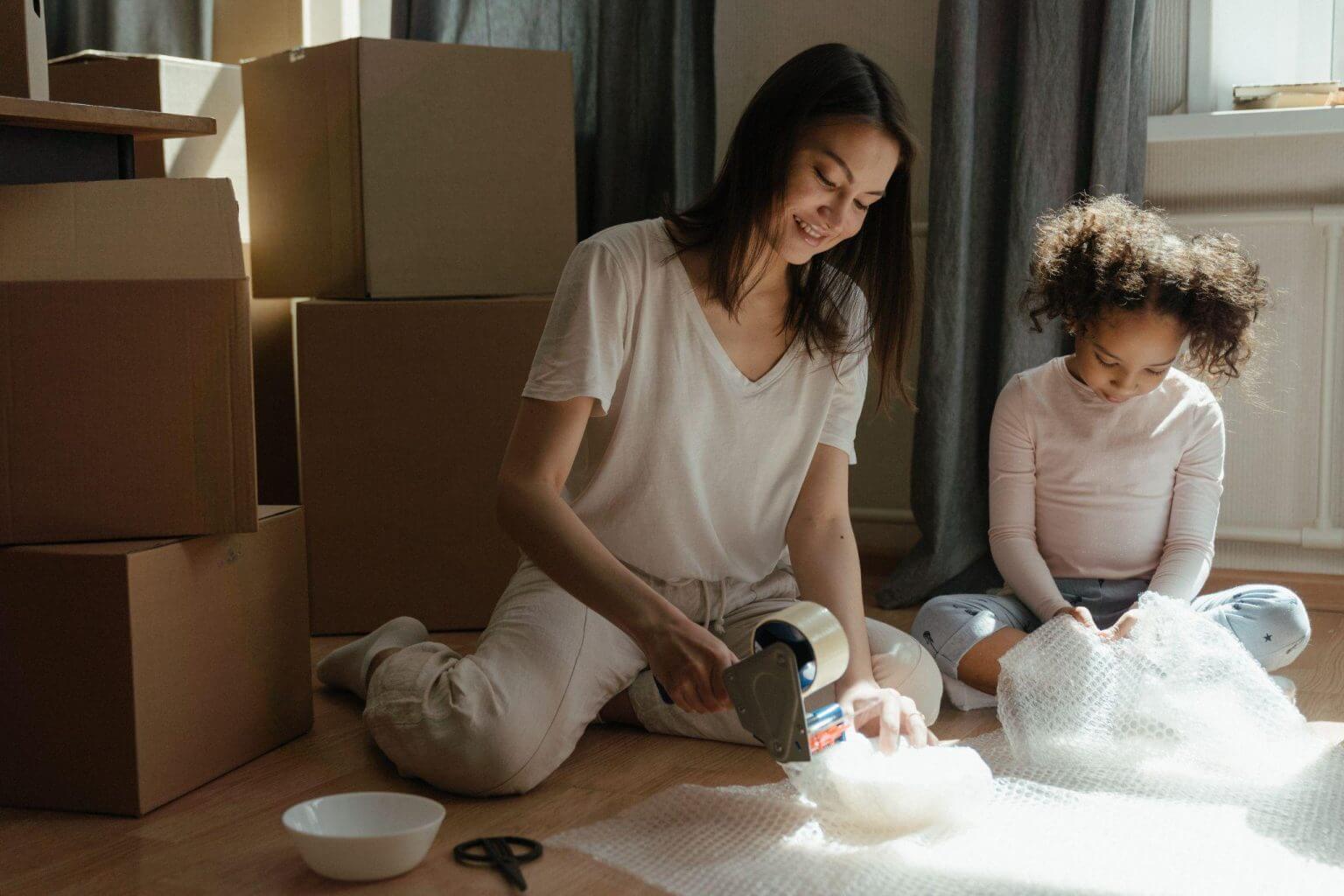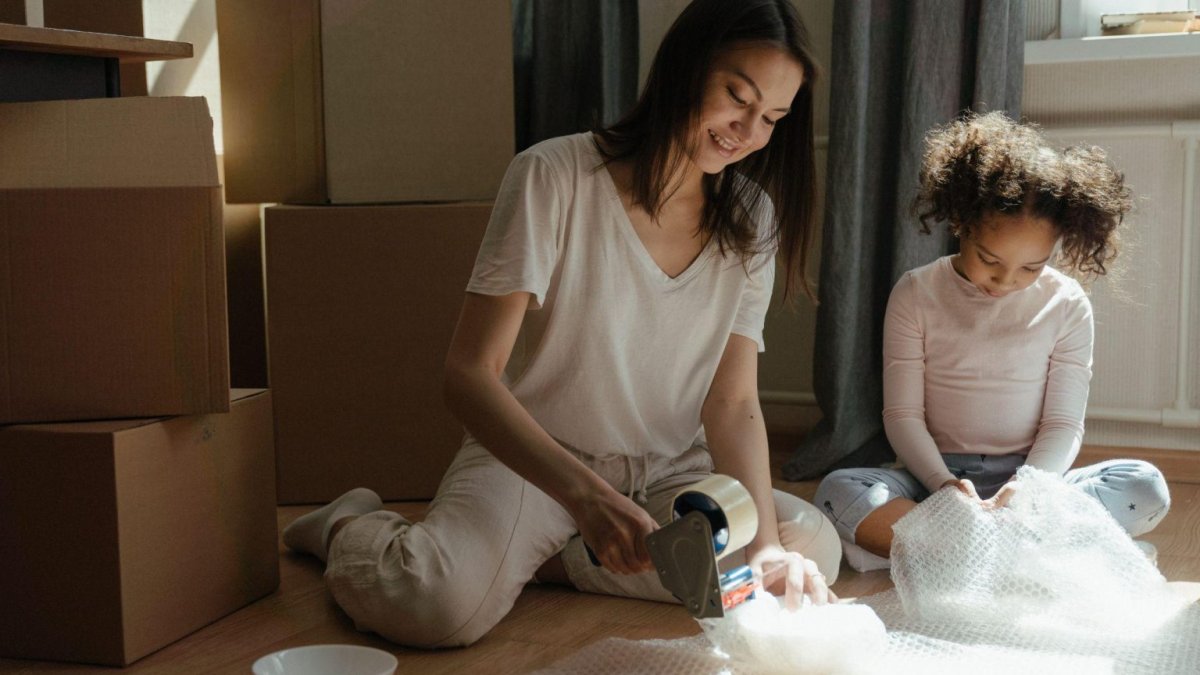
If you’re going to move, it’s important to plan to ensure everything goes smoothly. How will you pack your belongings for the move during your preparations? Good packing practices will ensure that all of your items are safe during the move.
In this guide, we’ll go over the essential steps for packing your items for a successful move. We will cover the process of organizing and preparing your belongings, choosing moving supplies, and packing your items correctly. We’ll also provide you with packing tips for each room in your home. Following these steps will help you ensure that your possessions arrive in their proper condition at the new location.
8 Essential Packing Tips for Moving
How to prepare for moving to a new home? Here are eight essential packing tips that you should follow before the big day comes.
1. Prepare Packing Supplies
Before beginning the packing process, make sure to have all of the necessary supplies ready and organized:
- Boxes — You will need sturdy boxes of various sizes for packing your items
- Bubble wrap — Have bubble wrap ready because items such as dishes and glasses will need extra protection
- Paper padding — You can also use paper or newspaper to provide extra cushioning for fragile items
- Markers — Since labeling boxes is essential, have some markers on hand
2. Pack Room by Room
Once you’ve gathered the necessary supplies, start packing room by room in your home. This practice will help to keep things organized and make it easier to track your progress.
It’s also a good idea to pack items that you don’t use often first. These things can be out of the way while you focus on the items that you need to use daily.
3. Label Boxes Thoughtfully
Labeling your boxes is an essential step in the packing process. Make sure to not only label the contents of each box but also the room where it belongs. Proper labeling will help your movers understand how to place your items correctly. It will also make the unpacking process easier.
4. Leave Clothes on Hangers
If you are moving clothes, it is best to leave them on their hangers and place them in large wardrobe boxes for transport. You will be pleasantly surprised to see how much time it will save you when unpacking at your new home! All you’ll have to do is transfer the clothes from the box to their rightful closet.
5. Choose the Right Folding Method
When packing clothes, be sure to fold them correctly. The best way is to lay the item flat on a table and then fold it in half, followed by folding each side inwards and folding one end into itself. This method will ensure that your clothes remain wrinkle-free and ready to wear when you arrive at the new place.
6. Pack Dishes and Glasses Using Containers or Towels
Your dishes need extra protection during transportation. The safest way to secure fragile items is to wrap each one in paper or bubble wrap and then pack them in special dish containers. If you don’t have any containers, use towels and keep the items tightly packed together.
7. Pack Important Documents Together
Your important documents such as passports, birth certificates, and other legal papers should be kept separately from other belongings. Make sure to pack these essentials together in one box or envelope. In case you need any documents during the move, it will be easier to find them this way.
8. Let Movers Pack for You
If you don’t have enough time or energy to pack your items yourself, delegate this task to experienced movers. Professional Orange County moving services can take care of packing for you. No need to worry about finding supplies, packing step by step, and ensuring that everything is safely transported.
By following these eight essential packing tips, your moving process will be simplified and all of your belongings will be safe during transportation.
How To Pack for Moving House Room-by-Room
Now that you know how to pack your items, let’s take a closer look at each room in the house and review some essential packing tips you should follow.
Kitchen
Before you start packing kitchen supplies, defrost your refrigerator at least 48 hours before moving out. Make sure you’ve also disposed of all expired food items.
Disassemble large kitchen gadgets such as the blender or mixer. Wrap each item individually with bubble wrap or paper padding before placing them in the box.
Pack the kitchen supplies in boxes and label them accordingly. You can use old newspapers for extra padding if necessary. Take extra care when packing fragile items such as glasses and plates — wrap them one by one and place them securely in containers or dish packs. You can also use towels for extra cushioning.
Dining Room
Start packing up the dining room by disassembling large furniture pieces and wrapping them in blankets. Take the legs off of the chairs and pack them in moving boxes along with the nails or casters. Place a blanket around the kitchen table and ensure it is located in a stable area to prevent it from sliding around.
To protect the rug, either roll it up and wrap it in plastic or secure it with packing tape. Don’t forget to label the boxes with their contents and the room they belong to.
Living Room
The living room is probably one of the most challenging rooms when it comes to packing — from furniture pieces to electronics, many items require special attention.
Begin with disassembling any large furniture pieces in the living room. Once you do, take care of all the small items, such as books and decorations.
To secure your artwork and mirrors during transportation, cover them with either blankets or bubble wrap. To protect electronics, cover them with blankets and remove the base from TVs and computers by unscrewing them. Take out the light bulbs and lampshades from the lamps and wrap them in a newspaper for protection.
Pack all of the pieces in their original boxes or a separate box labeled with the item’s name. If you have a lot of items, use color coding to differentiate between different types of objects.
Bedrooms
Bedrooms also have many items to pack up — from clothing to bedding and linens. Remove all the sheets, pillows, blankets, and comforters from the beds and pack them in large plastic bags or containers. Place the mattresses in bed bags to ensure that they are protected from any potential damage.
When it comes to clothing and shoes, fold items neatly and use special bags for delicates. Like with other rooms, label the boxes with their contents.
Bathroom
The bathroom is the place with the most delicate items and you should take extra caution when packing them. Put toiletries in sealable plastic bags and place them in a separate box. The same goes for other fragile items like makeup, lotions, and perfumes — pack them separately and make sure to label the boxes correctly.
Conclusion
Packing for a move can be overwhelming and time-consuming. Following the packing tips for moving we’ve shared can make the process much easier.
Make sure to disassemble large furniture pieces, wrap fragile items separately, and label boxes with their contents for easy unpacking. Use towels or newspapers for extra padding and secure your belongings during transport with blankets or plastic. Color-code items if you have a lot of them.
With these tips in mind, you can be sure that your packing and unpacking will go smoothly.
Good luck with your move!
Luca Thomson
Related posts
Stay connected
Today's pick
- Safety Essentials Every CNC Operator Should Follow DailyCNC machining demands precision, consistency, and discipline—but above all, it requires strict attention to safety. Whether you’re working with mills, lathes, routers, or grinders, every machine has the potential to cause serious injury if mishandled. That’s why CNC operators must follow safety protocols daily, no... The post Safety Essentials Every CNC Operator Should Follow Daily […]

